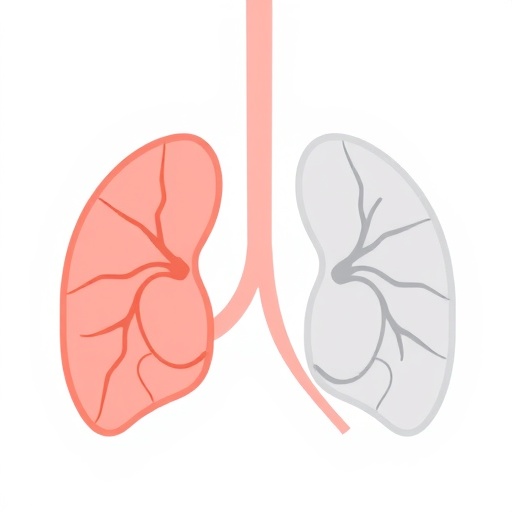Our genetic code includes over 15,000 specific sections that can be made into molecules called lincRNAs. Some of these sections can occur in coiled-up sections of our genome called TADs. LincRNAs derived from TADs appear to act as markers indicating the specific kind of tissue they are within. When something is wrong in these tissues, the markers could help with targeted medical interventions. The team that discovered this novel feature has outlined a way to apply this idea to different diseases and demonstrated it with a heart disease known as hypertrophic cardiomyopathy.

Credit: ©2023 Hamba et al.
Our genetic code includes over 15,000 specific sections that can be made into molecules called lincRNAs. Some of these sections can occur in coiled-up sections of our genome called TADs. LincRNAs derived from TADs appear to act as markers indicating the specific kind of tissue they are within. When something is wrong in these tissues, the markers could help with targeted medical interventions. The team that discovered this novel feature has outlined a way to apply this idea to different diseases and demonstrated it with a heart disease known as hypertrophic cardiomyopathy.
Diseases can affect very specific tissues in our bodies, but current treatments are often indiscriminate in the regions they impact. For this reason, there is a lot of research in the field of medicine towards more specifically targeted treatments. One avenue of research lies in the exploration of relatively recently discovered sections of our genetic code called long intergenic noncoding RNAs, or lincRNAs. The regions on our genome where lincRNAs are copied, or transcribed from, were once referred to as junk DNA, but a growing body of research suggests these are anything but junk.
“Lately, I felt driven to uncover what made lincRNA different from the more familiar messenger RNA, which is used to make, or express, proteins,” said Yu Hamba from the Tsunoda Lab at the University of Tokyo’s Department of Biological Sciences. “I wanted to comprehensively describe the mechanism that explains the difference in specificity of expression between the types of RNA. Whereas messenger RNAs necessarily synthesize proteins, lincRNAs can function without making proteins and seemed far more specific about what they do express. Through expression of different molecules, lincRNAs control many different biological processes, such as certain gene activities, and when expression goes wrong, it could indicate the presence of disease.”
Hamba and her team explored the way some of the 15,000 known lincRNAs were expressed. Their findings confirmed earlier observations that lincRNA expressions were far more dependent on the tissues that contained them than messenger RNA expressions. But more interestingly, the researchers also discovered that this specificity was further enhanced by where on the genome the particular sections of lincRNA came from. Our genome is a long string of genetic information, but this is often coiled up into complex three-dimensional shapes called chromosomal topologically associating domains, or TADs. LincRNAs transcribed from these coiled-up TADs were far more likely to yield tissue-specific expressions than lincRNAs from outside these regions.
“Armed with the knowledge of where to look for these highly tissue-specific lincRNA markers, we propose an analytical framework for interpreting properties of lincRNA as indicators for different tissues,” said Hamba. “As an experiment, we already applied our framework to the heart disease hypertrophic cardiomyopathy (in which the heart muscle thickens) and found what causes the abnormal expression of the protein keratin which leads to the disease. It’s my hope that we can now explore this area further and find some of the underlying abnormal expression products that might lead to things like tumors.”
###
Journal article: Yu Hamba, Takashi Kamatani, Fuyuki Miya, Keith A. Boroevich, Tatsuhiko Tsunoda. “Topologically associating domain underlies tissue specific expression of long intergenic noncoding RNAs”, iScience. DOI: TBC
Funding:
This work was supported by JSPS KAKENHI Grant Number JP19J22115.
Useful links:
Graduate School of Science – https://www.s.u-tokyo.ac.jp/en/
Tsunoda Lab – http://mesm.bs.s.u-tokyo.ac.jp/Research_Eng.html
Research contact:
Professor Tatsuhiko Tsunoda
Department of Bioinformatics, The University of Tokyo,
7-3-1 Hongo, Bunkyo-ku, Tokyo, 113-0033, Japan
[email protected]
Press contact:
Mr. Rohan Mehra
Public Relations Group, The University of Tokyo,
7-3-1 Hongo, Bunkyo-ku, Tokyo, 113-8656, Japan
[email protected]
About The University of Tokyo
The University of Tokyo is Japan’s leading university and one of the world’s top research universities. The vast research output of some 6,000 researchers is published in the world’s top journals across the arts and sciences. Our vibrant student body of around 15,000 undergraduate and 15,000 graduate students includes over 4,000 international students. Find out more at www.u-tokyo.ac.jp/en/ or follow us on Twitter at @UTokyo_News_en.
Journal
iScience
Method of Research
Experimental study
Subject of Research
Human tissue samples
Article Title
Topologically associating domain underlies tissue specific expression of long intergenic noncoding RNAs
Article Publication Date
27-Apr-2023




